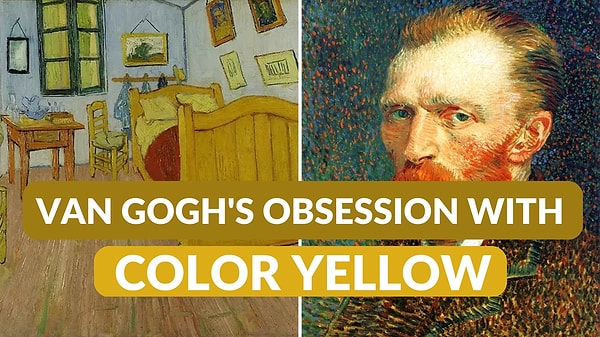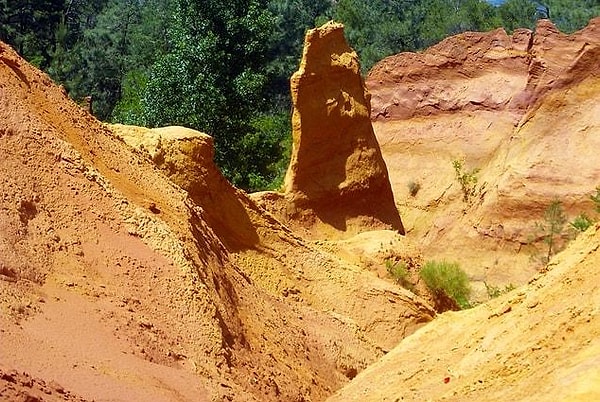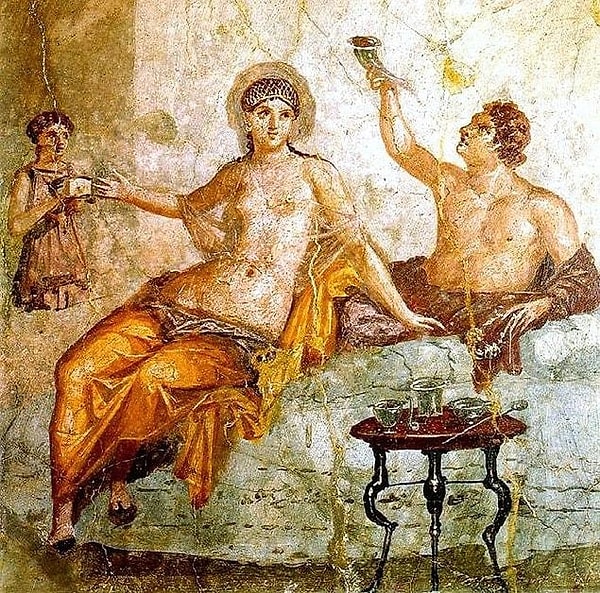Everyone knows that Vincent van Gogh's favorite color was yellow. And why is that? We have compiled for you both the thousands of years of history of the color yellow and the reason for Gogh's fondness for the color yellow
Vincent Van Gogh's Yellow Journey: The History and Significance of a Vibrant Color

Our story goes back 19,000 years. Yellow is one of the oldest colors in painting.

In the past, this color, derived from yellow ochre, was already present in nature with its clay-like structure.
In these cave drawings from Lascaux (17,000 BC) we see a yellow horse. 👇

Again, we see the yellow color in ancient artifacts around the world as it is obtained from the earth.

Ancient Egyptians especially loved this color because it looked like gold! The Romans loved this color as much as the Egyptians.
In the Middle Ages, the color yellow became associated with Judas. Although there is no information about this in the Bible, he was always depicted in yellow clothes.
As in this work by Giotto (1267-1337) ☝
It was not until the Renaissance in the 16th century that artists began to embrace true perspective and depth in art.
Thus, the color yellow got rid of negative connotations. We see that this color is dominant in Raphael's School of Athens.
However, during the Renaissance there was a tension between the artists of Florence and Rome, who emphasized form and composition, and the artists of Venice, who emphasized color.
As we move into the 17th and 18th centuries, color itself begins to take center stage. Nicolas Poussin, like Titian, whom he followed, depicted color in a striking way.
Especially the color yellow.
Caravaggio used the color yellow in an unprecedented way: To paint sunlight!
The Calling of Saint Matthew (1600)
Another point you should pay attention to from the Renaissance to the 18th century is the increasing realism of the color yellow.
Artists painted the world as it was.
Like the milkmaid dressed in yellow in Vermeer's Milkmaid (1658).
But things changed when Romantic artists realized that emotion was the main thing that fueled art.
Just as we see in this work by JMW Turner.
But it was the Academy of Fine Arts in Paris that dominated the art world in the 19th century.
They followed Leonardo and Raphael as devoted followers of the High Renaissance: They prioritized the human form, composition and perspective.
Academy artists imitated everything they saw in the High Renaissance. including classical and biblical themes.
As a result, models modeling in workshops emerged.
Impressionism emerged as a reaction to the Academy.
Artists like Edouard Manet and Claude Monet thought that the world did not look like an artist's studio.
We see everything differently in this movement: The sky, the changing lights and many other things.
The Impressionists painted Biblical and Classical scenes, but they also used scenes from ordinary life.
And now we come to the 1880s: Vincent van Gogh, former theology student and preacher, began to paint.
His early works are different from Gogh as we know him. Where are the vibrant colors? Where is the color yellow? Here we have to mention Gaugin...
Paul Gaugin (1848-1903) took a step forward and reacted against Impressionism. He adopted a more subjective style of realism.
Diving into abstract thoughts, Gaugin freed color from the world we see; he conveyed it differently.
Gaugin adopted unnatural colors. He depicted semi-abstract images rather than depth in his paintings.
Vincent van Gogh met Gaugin in Paris. The two later lived together for a while.
Gogh learned a lot from both Paris Impressionism and Gaugin: He began to use colors freely. Gradually he began to embrace vivid colors.
Seeing both the Impressionists and the Post-Impressionists who reacted to them, what impressed Gogh was that he painted as he felt, forgetting the true color of the world.
This also explains why Gogh painted both in bright yellow and in an unrealistic way.
However, the real importance of yellow for Gogh, rather than its history, was stated in a letter he wrote to his sister in 1888:
The sun, the light that I can only call yellow, for lack of a better word, bright sulfur yellow, pale lemon yellow. How beautiful yellow is!
Yellow was a color that inspired him, bringing out his sometimes anxious, sometimes troubled genius.
Either it took up an entire room or it was the view from the hospital in Arles.

